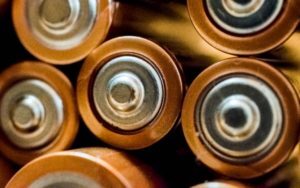St. Petersburg Hazardous Waste Disposal
Do you have hazardous household waste? Safe and responsible disposal of toxic waste is crucial for residential homeowners and businesses. Hazardous waste includes any substance, material, or product that reacts, corrodes, ignites, or releases toxic gasses on exposure. Hazardous waste generation at home is more common than you can imagine. From aerosol sprays to automotive products to electronics to cleaning products and pesticides, household hazardous waste can be astronomical. It takes a team of specialists to handle, transport, and dispose of hazardous waste in an eco-friendly way. While we don’t accept St. Petersburg hazardous waste in the dumpster because of landfill restrictions, St. Petersburg residents have excellent options for hazardous waste disposal.
Understanding St. Petersburg hazardous waste categories
Knowing how to handle hazardous waste is crucial to keeping yourself safe and protecting the environment.
There are various categories of hazardous waste, and these include;
- Corrosive hazardous waste. An excellent example of this waste is battery acid and any other substance that corrodes surfaces and living tissues on exposure.
- Reactive hazardous waste is any waste material that reacts or explodes on exposure to air, water, or any other fluid/material.
- Flammable waste. This hazardous waste category can start fires spontaneously or catch fire on exposure.
- Toxic waste. Excellent examples of toxic waste include pesticides, paints, and cleaning products. Highly-toxic trash can cause severe bodily harm even on exposure to small traces.
Identifying hazardous materials can be pretty straightforward. Please read the product label to understand the contents and how to dispose of it after use.
Typically, your household products are safe but require extra care when handling and throwing them away.
Importantly, read and understand the local guidelines and laws on how and where to throw away hazardous household waste.
Avoid discarding chemicals down the drains, which can create problems with your septic system.
Also, burning toxic waste in an uncontrolled environment is a risk.
Properly store product containers safely to avoid contamination or igniting fires —empty chemical containers can be ticking time bombs.
Where to take hazardous waste in St. Petersburg?
If you’re looking for your household or commercial hazardous waste options, you are in the right place.
Pinellas County offers collection programs for hazardous waste, and below are some of the ways to get rid of hazardous waste.
Take electronics and chemicals to your local community collection center.
The local collection center accepts various hazardous electronics and chemicals.
All you need to do is haul your harmful waste to the HEC3 (Household Electronics and Chemical Collection Center).
HEC3 takes hazardous waste into two categories; Electronics and chemical waste.
Some of the electronic waste you can take to the facility include computers, monitors, cell phones, TVs, tablets, smartphones, and drives.
The chemical waste includes household chemicals, paints, automotive fluids, fluorescent bulbs, pool products, thermostats, rechargeable batteries, and garden chemicals.
The center utilizes various opportunities to dispose of hazardous household waste responsibly.
For instance, there is the Swap Shop where residents can drop off excess valuable products, and others can pick them up for free to use on their projects.
Remember, limits apply to the amount of St. Petersburg hazardous waste you can bring to the center.

Donate
Do you have extra fertilizer, paints, or cleaning products? Another ideal option for your household hazardous waste is to donate to someone or an organization.
For instance, you give away excess motor oil to your local garage.
Take-back programs and recycling
Take-back programs are excellent for electronics disposals. Manufacturers and stores have take-back programs to collect their branded junk electronics from consumers.
Furthermore, you can look for local hazard waste recyclers like electronic recycling companies to take your junk.
If you have further questions on specific products or items you want to dump, Bin There Dump That is here to help.
- Revive Your Home for Spring with This Spring Home Maintenance Checklist
- 10 New Home Trends That Will Make Your Friends Jealous
- How Our Dumpsters Support Realtors and Property Managers: A Comprehensive Guide
- 12 Jaw-Dropping Clutter Statistics That Will Make You Want to Declutter Today!
- Unlocking Space: The Complete Guide on Pocket Door Installation
- Step by Step Guide on How to Install Carpet Like a Pro